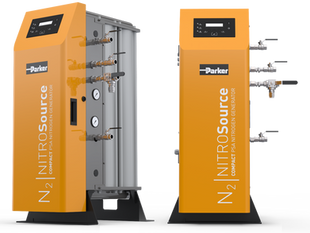

GeoMAREA (Gamma-ray spectometer for in-situ MARine Environmental Applications
Jan 9, 2024
2 min read
0
225

TO LTD, in cooperation with the Marine Environmental Radioactivity Laboratory of the Hellenic Centre for Marine Research (MERL-HCMR) and the Laboratory of Nuclear Physics of the National Technical University of Athens (LNP-NTUA), has successfully completed the project “Research and development of an in-situ underwater gamma-ray spectrometer for low-level radioactivity measurements” (Code: 12CHN212), in the frame of a bilateral Greece-China cooperation. The project was co-funded by the General Secretariat for Research and Technology (GSRT), Greece, under NSRF 2007-2013.
The final product of the project is the GeoMAREA system (Gamma-ray spectrometer for in-situ MARine Environmental Applications).
The GeoMAREA system
The sensor was developed for measuring in- situ the activity concentration of gamma-ray emitters in the marine environment. It is characterized by: capability to offer free-of-error continuous functionality down to 600 meter water depth; pluggable watertight cabling system for real time data transmission in case of operation at a buoy; high efficiency due to the minimum gamma-ray absorption in the enclosure material. Along with the sensor, a methodology has been developed (by using simulation codes and laboratory experiments) to convert the acquired gamma-ray data to quantitative activity concentrations (in absolute units Bq/L or Bq/m3), even for low level radioisotope concentrations. The combination of the state-of-the-art in-situ gamma-ray underwater sensor with the reliable quantification methodology renders GeoMAREA a gamma-ray spectrometer which is capable of performing measurements for different applications in the marine environment. The system has already been presented in international conferences.
Advantages
Stability
Low power consumption
Small dimensions
Long-term operation
Autonomy (computer independent)
Improved energy resolution and sensitivity
Different operation modes (stand-alone, cabled, at a buoy, on mobile platforms)
Capability for automated estimation of low radioactivity levels
Cost-efficient
Applications areas
Policy and decision-making
Radioprotection, especially in coastal zone where nuclear power and waste processing plants operate (continuous monitoring and early warning)
Pollution assessment and monitoring
Radioecology studies – including monitoring radioactivity levels at the sea bottom – in coastal areas with industrial activity (cement, fertilizer, oil, mineral/mining, desalination plants)
Energy resources
Monitoring of natural radioactivity for hydrocarbons exploration activities (gas hydrates included) in the marine environment
Meteorology
Rainwater quantification and estimation of cloud type
Geophysical research
Gas emanation/activity of submarine faults, volcanoes and cold seeps
Quality and quantity assessment of submarine groundwater discharges
For more information please visit the following link: http://radioscopio.hcmr.gr





